Small terrariums are an exceptional addition to your indoor and outdoor living decorations that even remove pollutants from the air. Different containers, stones, and plants are available in the market for miniature terrariums.
Choosing one of them is a tedious task. However, if you are not careful with the light, you may burn your baby plants. Light from the reflective walls of the terrarium container can amplify and adversely affect the plants inside.
If you add in too little light, the plants won’t stand and will fall. Thus, you can use fluorescent lights for a small terrarium or place them near windows for a diffused light. Look out for your terrarium plants and if they appear curly or coiled, prune them immediately. Moreover, do not overcrowd the container and always reserve some space for new growth of the terrarium plants.
Remember not to grow succulents in closed miniature terrariums as they thrive in high light but low moisture. For small terrariums, you can choose between mosses, jade, earthstars, etc., and prefer succulents only for open terrariums. With this, let us look at the top 10 plants for small terrariums.
1. Mood Moss (Dicranum Scoparium)
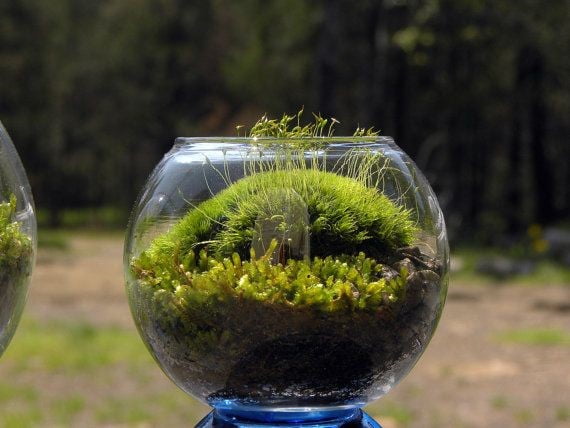
A chubby and vibrant plant with a temperamental appearance forms groups and leans to one side for a spectacular wind-swept appearance. Regardless of its moisture content, it appears green and textured and thus, is suitable for small terrariums. It works well with bright but indirect light and will look best with moist soil and artificial light. It doesn’t require premium potting soil and will adjust to various substrates only under good drainage. Moreover, it adapts to both humid and dry conditions. Hence, it is a suitable choice for open and closed terrariums.
2. Miniature orchids (Psygmorchis Pusilla)
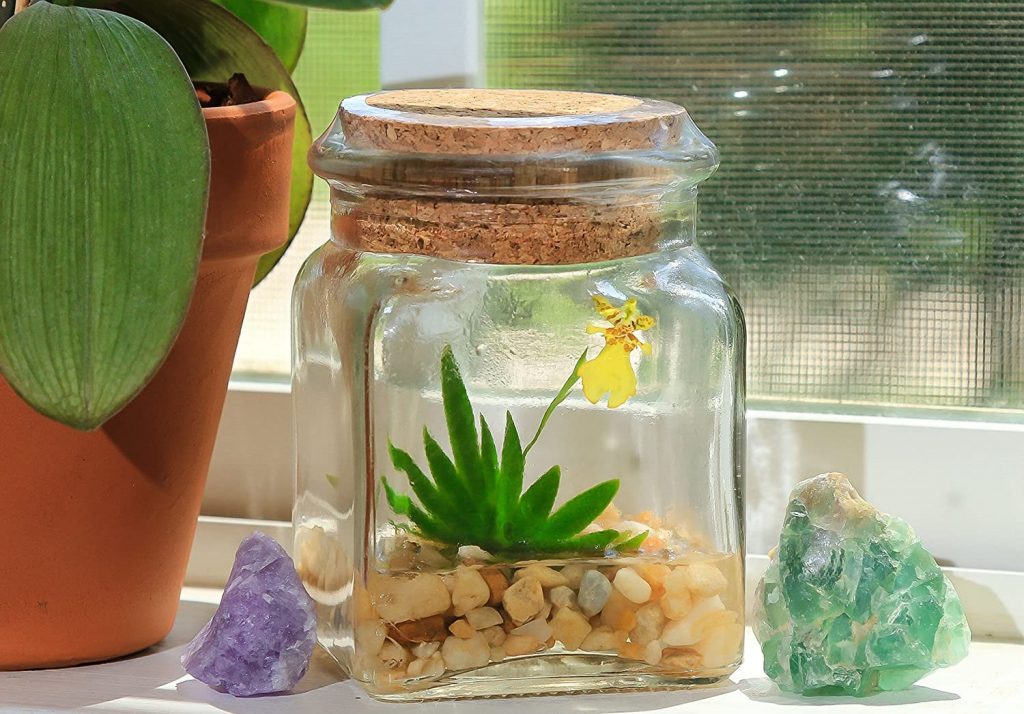
These beautiful plants with fan-shaped leaves and a disproportioned flower do not require special tending and take care of themselves. They are about 2″ wide during maturity and will grow healthy and bloom under the appropriate nutritional supply. They prefer glass terrariums and stay up to 24 months in closed terrariums. The flower stays for a whole month and re-blooms every two months if supplied with bright but indirect light.
3. Zebra Plant (Haworthia Fasciata)
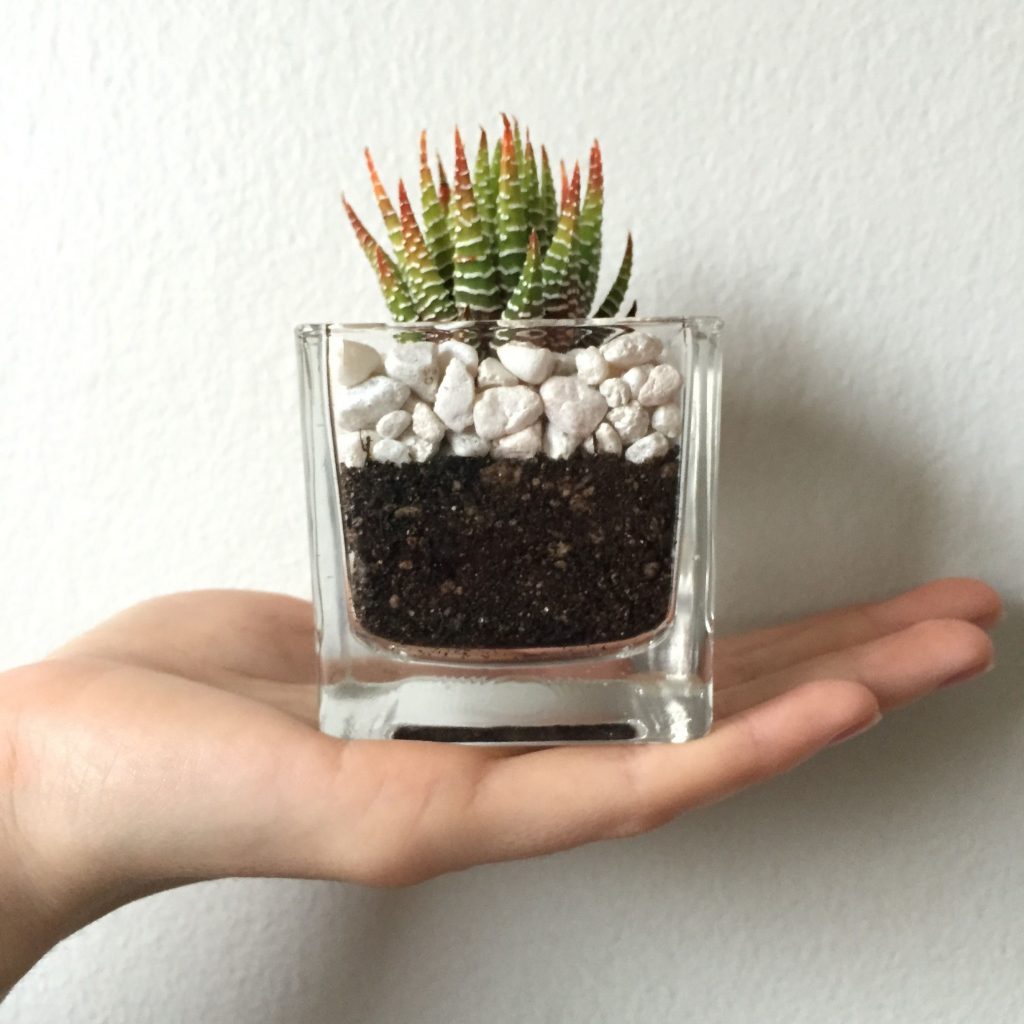
With dark green leaves and horizontal stripes, this plump plant is a suitable option for beginners as it grows without many considerations. These plants grow in indirect light or partial shade, so these terrariums are a convenient option for window sills. Moreover, it requires a neutral to an acidic substrate and lots of fertilizers.
It groups well with humidity and hence, will prefer closed terrariums. They open up the best when watered with filtered or distilled water or if the water sits out overnight around the terrarium. After flowering, if bracts appear pale, prune your plant and remove any wilting stems.
4. Sheet moss (Hypnum Curvifolium)
This moss spreads quickly and covers areas just like a sheet. Hence, it is a carpeting option for small terrariums and forms a densely layered carpet in no time. Apart from feathered leaves that personify hand weaving, the sheet moss remains short and remains smaller than 4 inches. Though it prefers an acidic substrate of 5.0 – 6.5, it also tolerates neutral levels around 7. It loves damp yet well-drained substrate and easily attaches itself to any sturdy material under exposure to bright indirect sunlight.
5. Ghost Plant or Mother of Pearl Plant
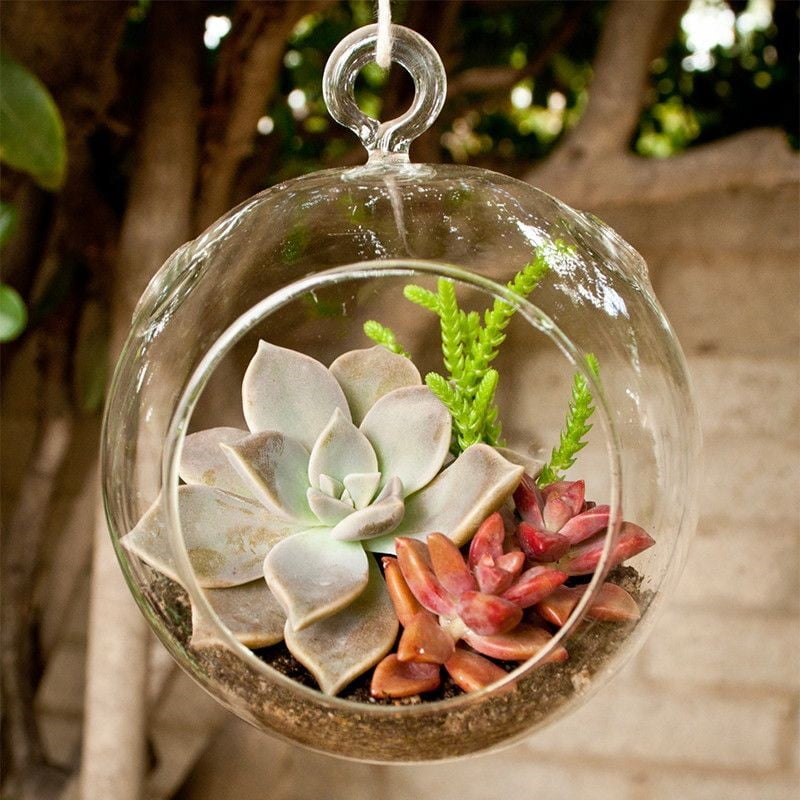
With pink, grey succulent leaves and trailing forms, they add a touch of contemporary outlook to your small terrariums. It is a low-maintenance plant that requires good drainage, sunlight, and appropriate irrigation. They need full sun for plants to stand or may cripple down. When growing in terrariums, arrange them in the south or southeast window.
For the plant to thrive, add in a mixture of sand, gravel, and organic matter like peat, cocoa, or a commercial potting mix. Moreover, as the plant does not like humidity, arrange it in an open terrarium instead of a closed one. Remember to prune the new shoots and replant them as they appear.
6. Button ferns (Pallea Rotundifolia)
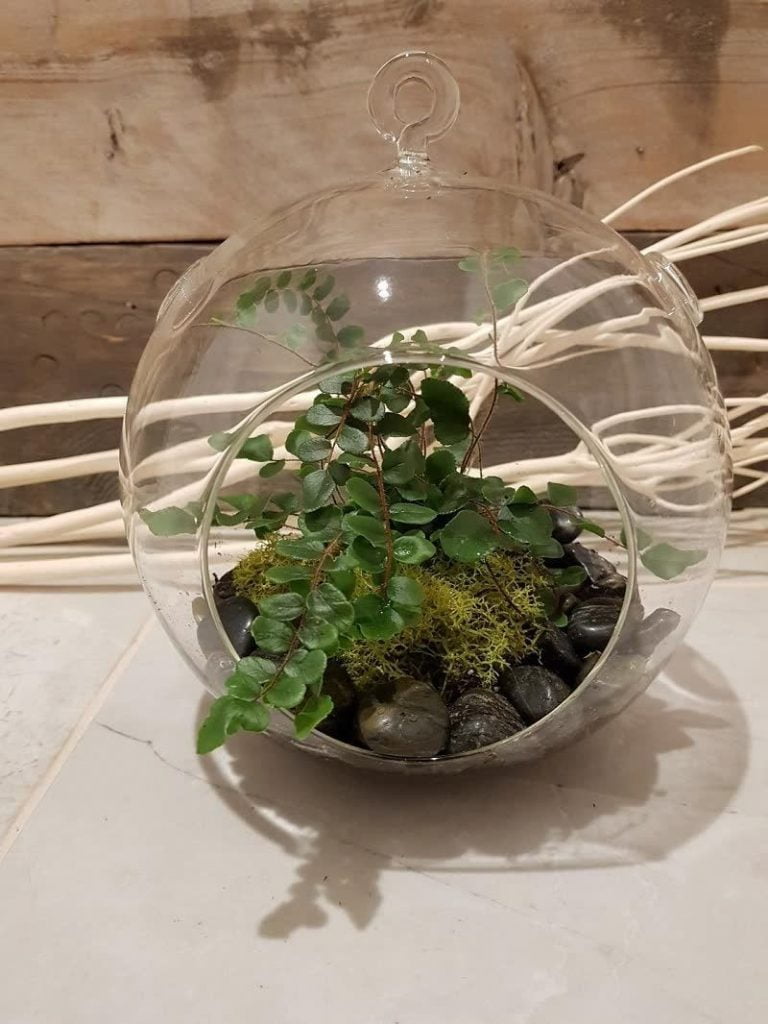
Button ferns are easy-maintenance plants with tiny and circular leaves. For a terrarium substrate, be sure to check in the soil and add sand and peat mosses. Button ferns do not like moisture and hence prefer open terrariums. They require low light in summers and high light in winters. Moreover, they do not need a warm setting and, a relative temperature of 26 degrees works fine for them. Check for brown tips in a terrarium and if they persist, install a dehumidifier.
7. Strawberry Begonias (Saxifraga Stolonifera)
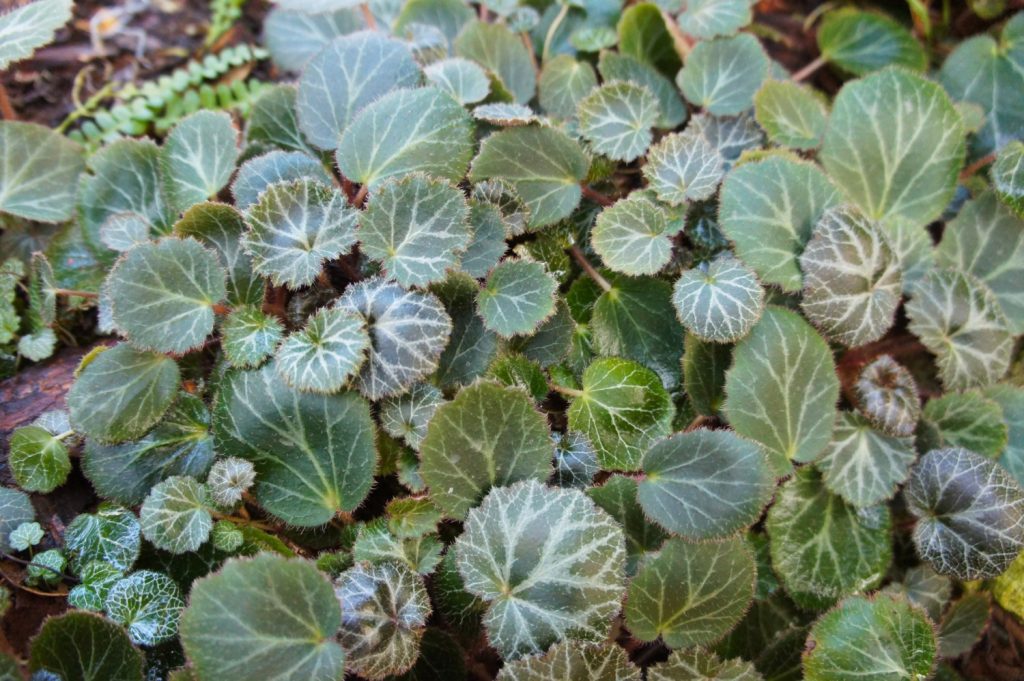
Though the plant with its burgundy red vertical stems and flowers escalates quickly, it reaches a height of only 8 inches even after full maturation. Thus it is appropriate for small terrariums. The foliage offers a dual-color pattern of green and deep red when flowers are not in bloom. Propagating the plant in terrariums is extremely easy and, tiny shoots will emerge from snipped-off stems. If well cared for, the plant survives for more than five years in small terrariums.
8. Venus Flytrap (Dionaea Muscipula)
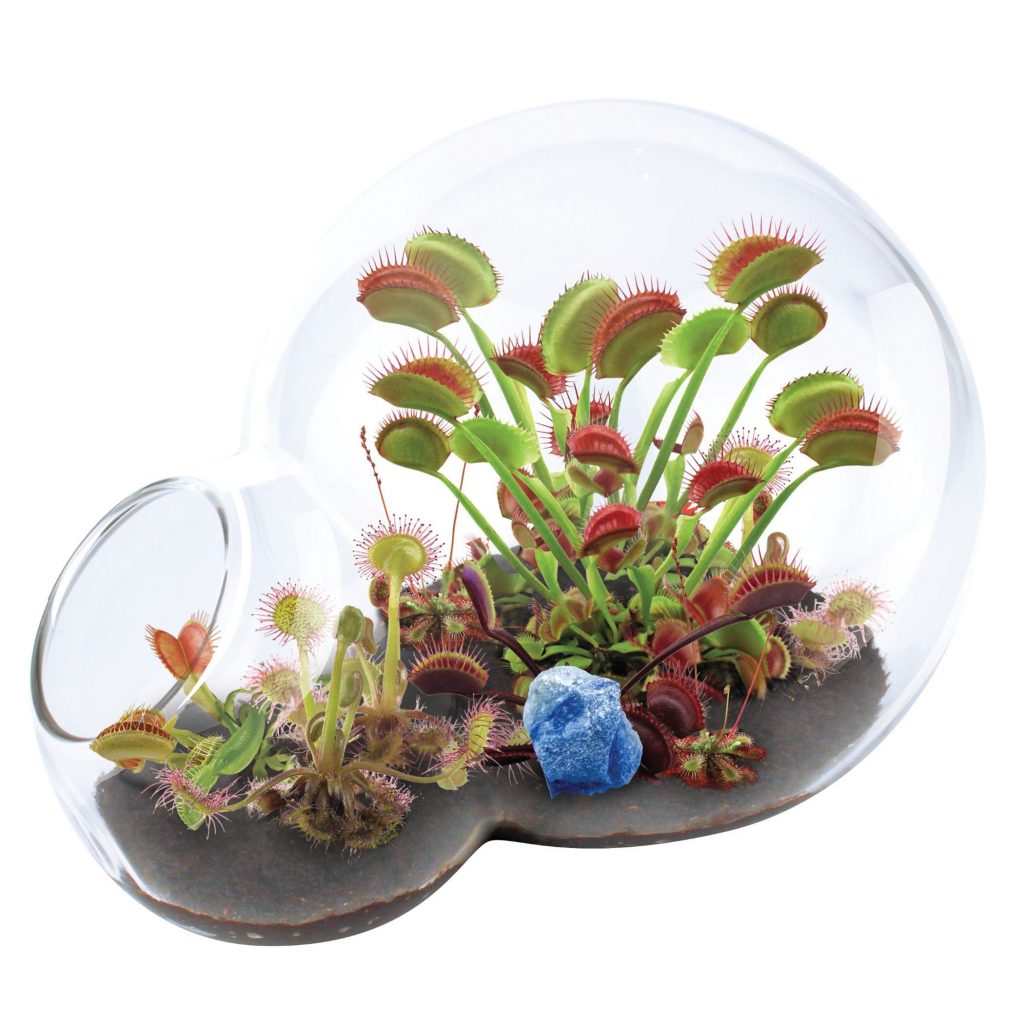
Though Venus flytrap is a carnivore and is famous for its exoticness and weirdness, it closes its adaptable leaves, just like a mouth, when insects sit on them. They are very decorative, attract insects and bloom with beautiful white flowers and green veins. They grow only about 2-3 inches and hence, are suitable for small terrariums.
Though they prefer bright but indirect light for about 6-7 hours per day, they do not like direct sunlight. Moreover, it prefers moderate but acidic soil of 3.0 to 5.0 pH. This soil needs to be moist all the time for a healthy plant.
9. Australian Pitcher plant (Cephalotus Follicularis)
An exotic and unique addition to your small terrariums, this large, waxy, sculptural pitcher has contrasting color combinations. It has tinges of green, purple, red, and violets with stripes. It prefers a partial shade with indirect light and grows up to 3 inches tall, making it suitable for small terrariums. It requires a peat moss and sand substrate with moist but not water-logged soil.
10. Living Stones (Lithops SPP)
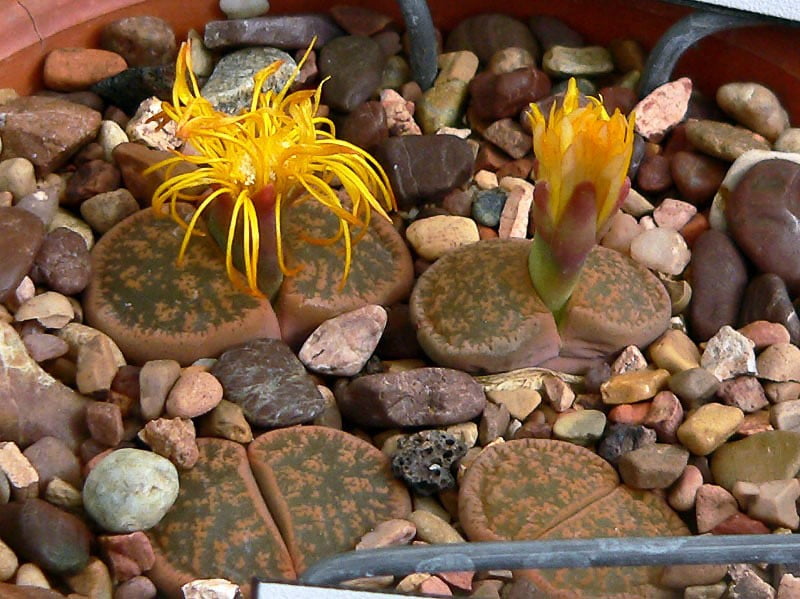
Wonders with small and dry terrariums, living stones never grow more than three inches tall and hence, are great alternatives for a desert-themed dry terrarium. They vary from yellows to purples, are extremely slow growers, and tolerate a wide range of temperature settings.
It can stand stiff even in direct sunlight. They require a potting mix similar to cactus and a pH of about 6.6. Never overwater these plants and water lightly with a spray only when dry.

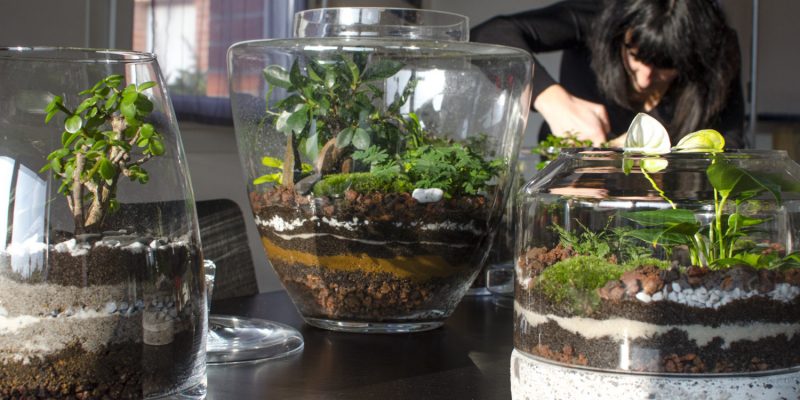

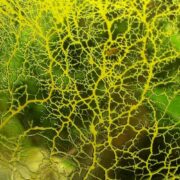
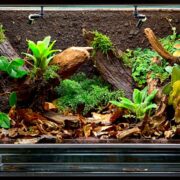
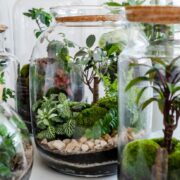
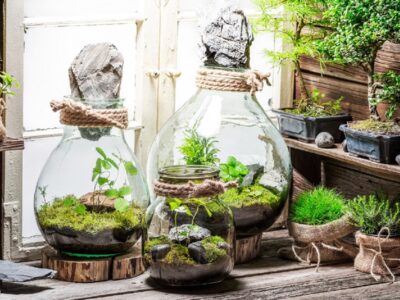
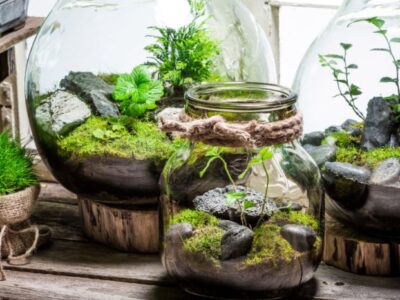
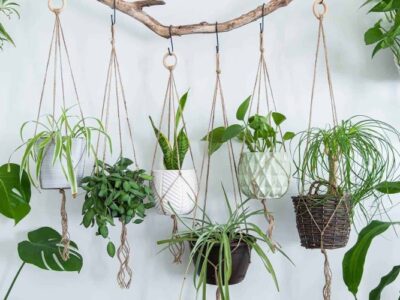
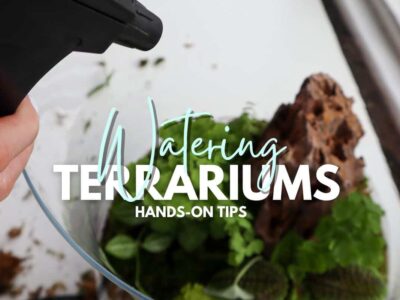
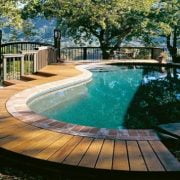
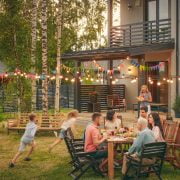
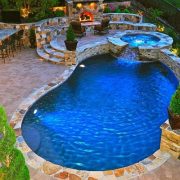

[…] Explore our detailed guide on terrarium plants to learn more about terrariums and their advantages. […]
[…] Learn more about choosing the right gravel for your terrarium plants. […]
[…] bringing small terrarium plants from your local nursery or florist shop to grow indoors at your home, people often wonder how to […]
[…] more about nurturing small terrarium plants effectively, and with time, you’ll […]
[…] However, if you’re curious about the care these delicate ecosystems require, particularly their watering needs, explore our guide to terrarium care. […]
[…] get ready to explore the fascinating world of small terrarium plants that grow faster than […]